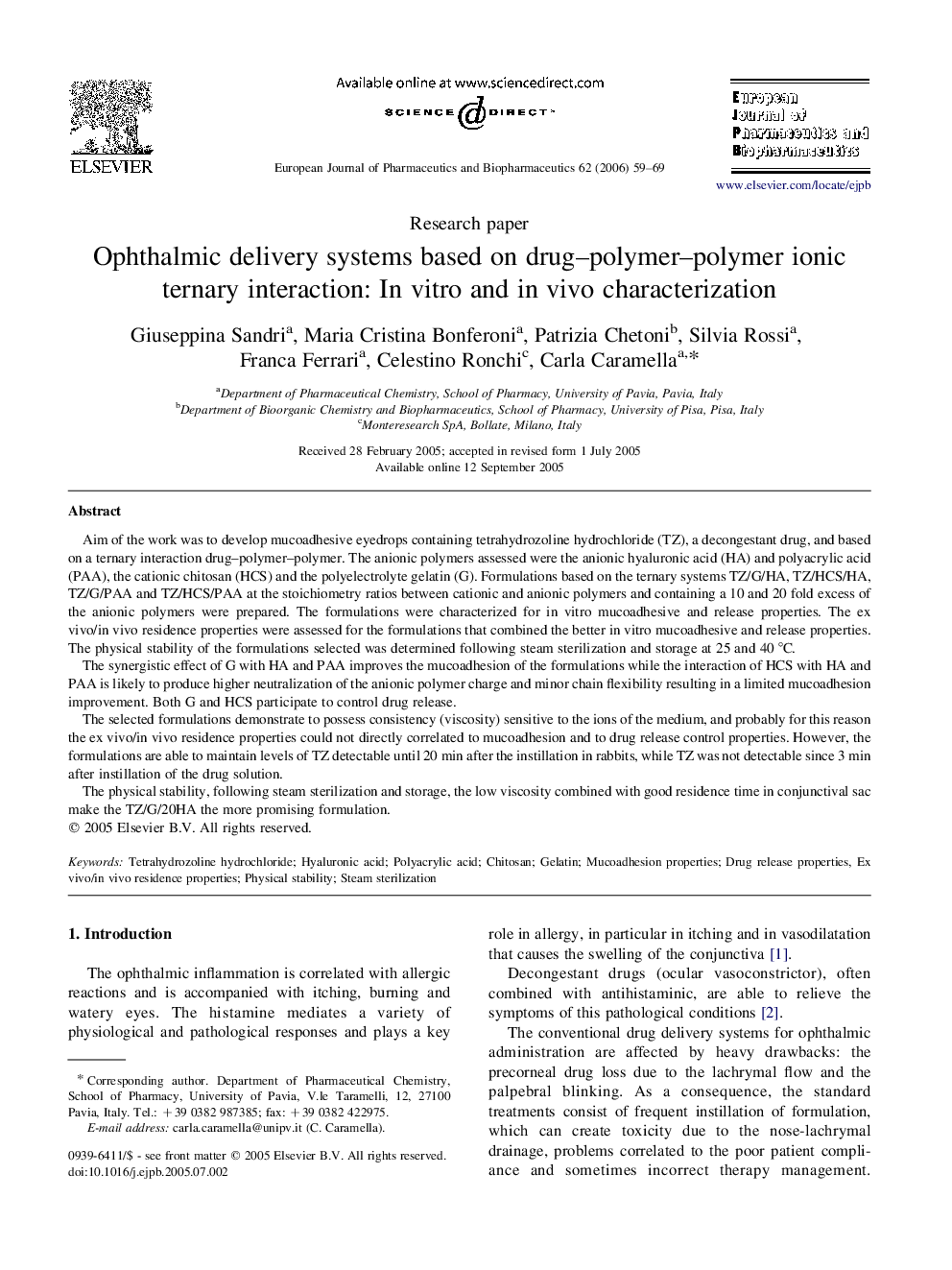| Article ID | Journal | Published Year | Pages | File Type |
|---|---|---|---|---|
| 2085078 | European Journal of Pharmaceutics and Biopharmaceutics | 2006 | 11 Pages |
Aim of the work was to develop mucoadhesive eyedrops containing tetrahydrozoline hydrochloride (TZ), a decongestant drug, and based on a ternary interaction drug–polymer–polymer. The anionic polymers assessed were the anionic hyaluronic acid (HA) and polyacrylic acid (PAA), the cationic chitosan (HCS) and the polyelectrolyte gelatin (G). Formulations based on the ternary systems TZ/G/HA, TZ/HCS/HA, TZ/G/PAA and TZ/HCS/PAA at the stoichiometry ratios between cationic and anionic polymers and containing a 10 and 20 fold excess of the anionic polymers were prepared. The formulations were characterized for in vitro mucoadhesive and release properties. The ex vivo/in vivo residence properties were assessed for the formulations that combined the better in vitro mucoadhesive and release properties. The physical stability of the formulations selected was determined following steam sterilization and storage at 25 and 40 °C.The synergistic effect of G with HA and PAA improves the mucoadhesion of the formulations while the interaction of HCS with HA and PAA is likely to produce higher neutralization of the anionic polymer charge and minor chain flexibility resulting in a limited mucoadhesion improvement. Both G and HCS participate to control drug release.The selected formulations demonstrate to possess consistency (viscosity) sensitive to the ions of the medium, and probably for this reason the ex vivo/in vivo residence properties could not directly correlated to mucoadhesion and to drug release control properties. However, the formulations are able to maintain levels of TZ detectable until 20 min after the instillation in rabbits, while TZ was not detectable since 3 min after instillation of the drug solution.The physical stability, following steam sterilization and storage, the low viscosity combined with good residence time in conjunctival sac make the TZ/G/20HA the more promising formulation.
